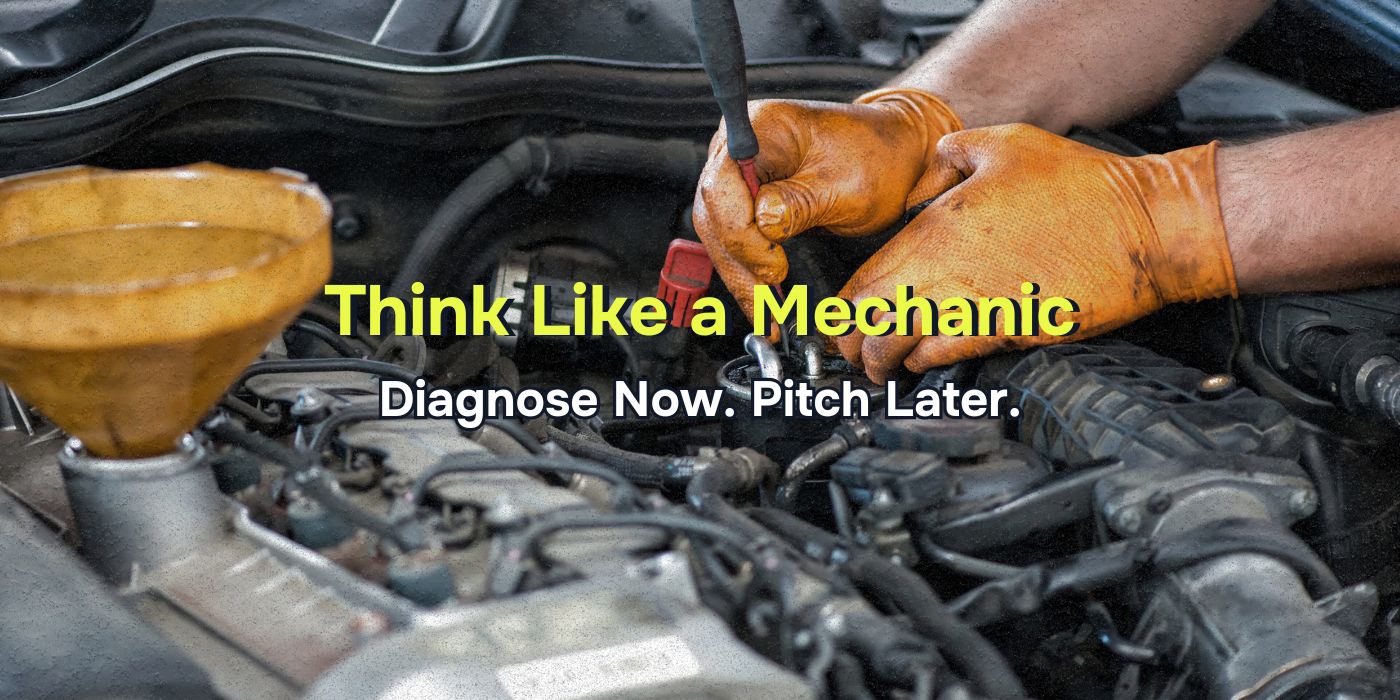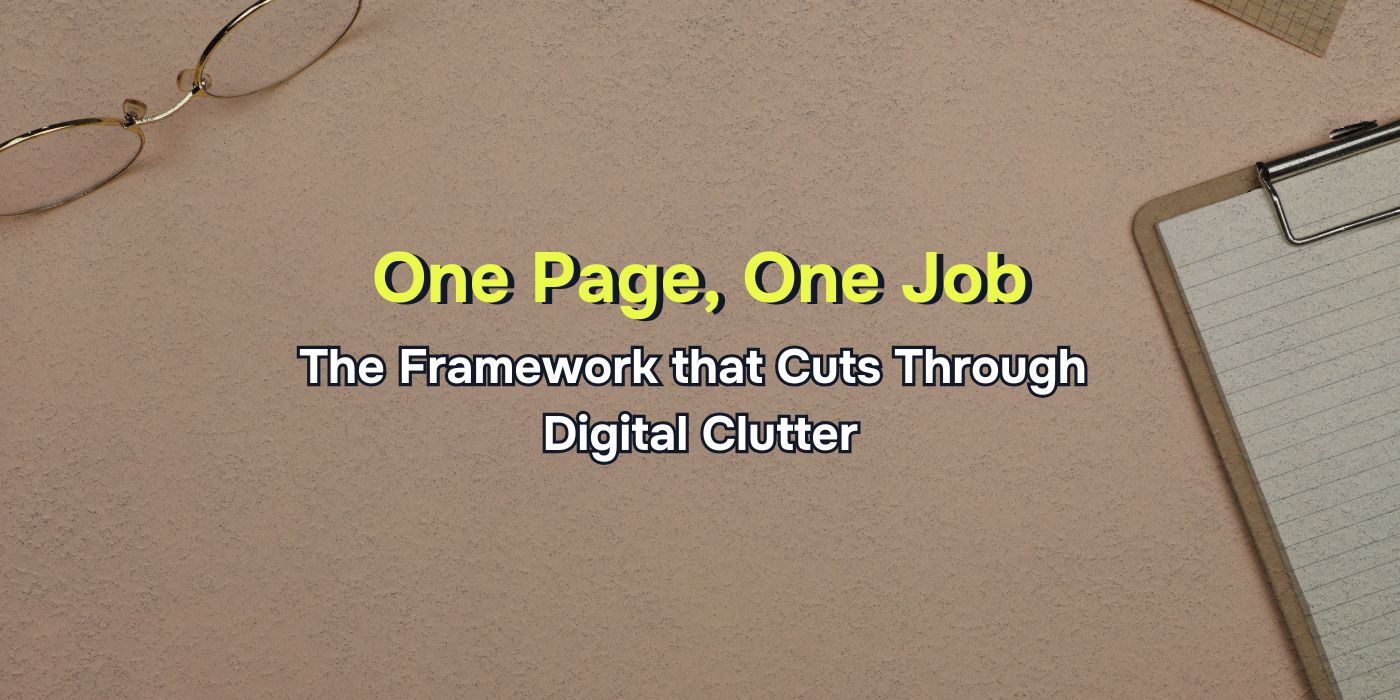Key Takeaways
- Pitching without diagnosing kills trust.
- Specificity builds more credibility than hype.
- Strong funnels work like diagnostics, not demos.
- Real marketing starts by showing what’s broken.
When your car starts making a weird noise, your mechanic doesn’t pull out a brochure. They listen. They run tests. They ask questions. They don’t pitch—they diagnose.
That’s what great marketers do, too.
Good Marketing Doesn’t Start With the Solution
Most marketing still leads with “what we do”—as if listing features and benefits is what builds trust. But customers don’t want a feature dump. They want to feel understood.
The mechanic doesn’t say “We’re the best shop in town.” They say, “Your front-right rotor is warped, which is why your car pulls when you brake.” Immediate credibility. No hype required.
As a marketer, the more precisely you can name the problem, the more your audience will trust that you have the right solution.
Diagnose the Drag, Don’t Just Push the Pitch
Pitching is easy. Diagnosing is harder—and more valuable. It forces you to understand what’s slowing someone down, where they’re leaking time or money, and why their current setup isn’t cutting it.
This is how you go from “we help companies grow” to “you’re burning six figures a year on lead gen that never converts because your form strategy is broken.” One sounds like everyone else. One sounds like you’ve been under the hood.
That shift—seeing like a mechanic—makes your content sharper, your sales calls faster, and your offers feel more necessary than optional.
Your Funnel Should Act Like a Diagnostic Process
Think about how mechanics build trust: they walk you through what they found, what it means, and what happens if you ignore it. Then they recommend the fix.
Marketing should work the same way. Your landing pages, lead magnets, and sales content should identify real symptoms, offer helpful context, and naturally lead to your solution as the next logical step—not a forced one.
By the time you make the offer, they should already believe you know what’s wrong.
Final Thought
Mechanics don’t need to persuade you that the engine’s broken. They just show you where it’s leaking.
Stop pushing product. Start showing people what’s broken—and what it’s costing them.
Trust follows diagnosis. Sales do too.
FAQs
Isn’t diagnosing the job of sales, not marketing?
No—great marketing sets up sales by surfacing the right problem early. Diagnosis creates context that makes the sale feel obvious, not aggressive.
How do I diagnose if I don’t have customer access?
Use interviews, reviews, forums, and support tickets. Anywhere your buyer vents is a goldmine for friction points worth highlighting.
Won’t being too critical scare people off?
Not if it’s accurate. Honest diagnosis builds trust. Buyers don’t want flattery—they want clarity.






